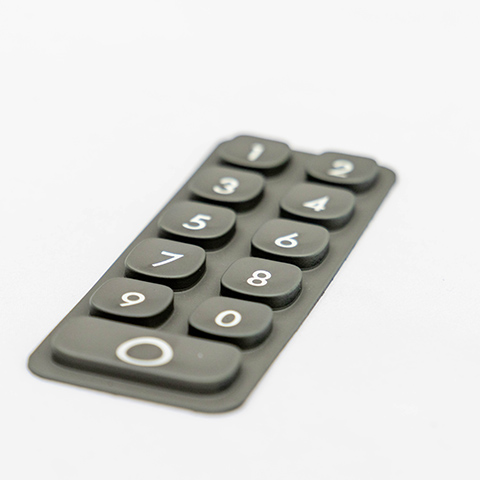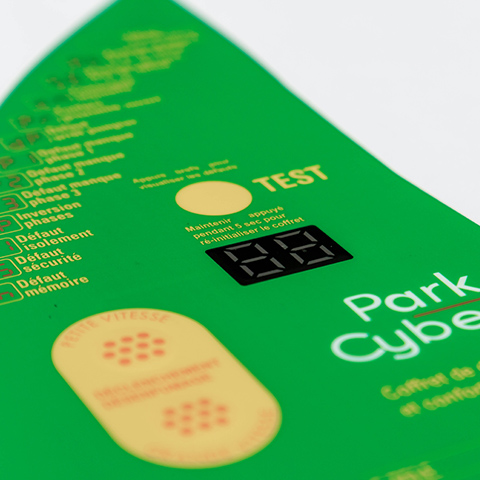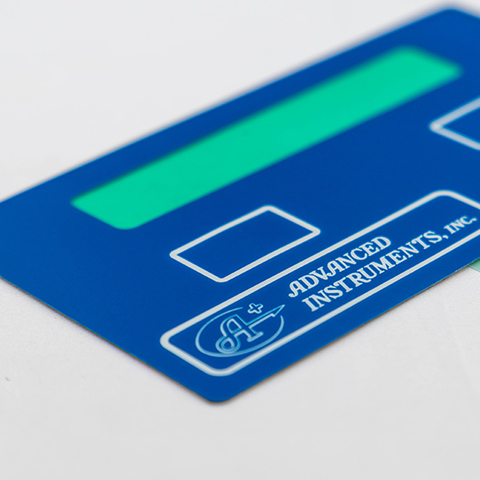Contact
Write to Us And We Would Be Happy to Advise You.
Do you have any questions, or would you like to speak directly with a representative?
By hqt
The graphic overlay in a membrane keypad is a crucial component that provides both the visual design and protection for the underlying circuit layer. Choosing the right material for the graphic overlay can have a significant impact on the performance, durability, and overall quality of the membrane keypad.



There are several materials commonly used for the graphic overlay in membrane keypads, including polycarbonate, polyester, and silicone. Each material has its own unique properties and benefits that make it suitable for different applications.
Polycarbonate is a popular choice for graphic overlays in membrane keypads due to its high durability, impact resistance, and excellent clarity. It is a thermoplastic material that can withstand high temperatures, making it ideal for use in environments where the membrane keypad may be exposed to high temperatures.
One of the key advantages of using polycarbonate for the graphic overlay is its excellent clarity, which allows the graphics and design elements to be clearly visible. Polycarbonate is also highly resistant to UV light and weathering, making it ideal for use in outdoor applications.
Polyester is another commonly used material for graphic overlays in membrane keypads. It is a highly flexible and durable material that offers excellent resistance to moisture, chemicals, and UV light. Polyester is also easy to print on, making it ideal for use in applications where a high-quality graphic design is required.
One of the key advantages of using polyester for the graphic overlay is its low cost, making it a popular choice for budget-sensitive applications. However, it is not as durable as polycarbonate, and may not be suitable for use in harsh environments.
Silicone is a highly flexible and durable material that is often used for graphic overlays in membrane keypads. It offers excellent resistance to extreme temperatures, moisture, and chemicals, making it ideal for use in harsh environments.
One of the key advantages of using silicone for the graphic overlay is its flexibility, which allows it to conform to curved or irregular surfaces. This makes it ideal for use in applications where a flexible graphic overlay is required. However, silicone is not as clear as polycarbonate, and may not be suitable for use in applications where a clear graphic overlay is required.
The material used for the graphic overlay in a membrane keypad can have a significant impact on its performance, durability, and overall quality. Polycarbonate is an excellent choice for its high durability and impact resistance, while polyester is a popular choice for its low cost and ease of printing. Silicone is a suitable choice for its flexibility and resistance to extreme temperatures, moisture, and chemicals.
The material used for the graphic overlay in a membrane keypad can have a significant impact on its performance, durability, and overall quality. There are several materials commonly used for graphic overlays, including polycarbonate, polyester, and silicone, each with its own unique properties and benefits.
High durability and impact resistance
Excellent clarity, allowing for clear visibility of graphics and design elements
Resistant to UV light and weathering, making it suitable for outdoor applications
Can withstand high temperatures
Higher cost compared to polyester
May yellow over time due to exposure to UV light
Low cost
Flexible and durable
Resistant to moisture, chemicals, and UV light
Easy to print on, making it ideal for applications where a high-quality graphic design is required
Not as durable as polycarbonate
May not be suitable for use in harsh environments
Flexible and durable
Resistant to extreme temperatures, moisture, and chemicals, making it ideal for use in harsh environments
Can conform to curved or irregular surfaces
Not as clear as polycarbonate
Higher cost compared to polyester
| Material | Advantages | Disadvantages |
| Polycarbonate (PC) | 1. High durability and impact resistance 2. Excellent clarity 3. Resistant to UV light and weathering 4. Can withstand high temperatures | 1. Higher cost compared to polyester 2. May yellow over time |
| Polyester (PET) | 1. Low cost 2. Flexible and durable 3. Resistant to moisture, chemicals, and UV light 4. Easy to print on | 1. Not as durable as polycarbonate 2. May not be suitable for use in harsh environments |
| Silicone | 1. Flexible and durable 2. Resistant to extreme temperatures, moisture, and chemicals 3. Can conform to curved or irregular surfaces | 1. Not as clear as polycarbonate 2. Higher cost compared to polyester |
When choosing a material for the graphic overlay in a membrane keypad, it is important to consider the specific requirements of the application, such as the environment, the required level of durability, and the desired visual appearance. Each material has its own unique advantages and disadvantages, and the right choice will depend on the specific needs of the application.
Do you have any questions, or would you like to speak directly with a representative?